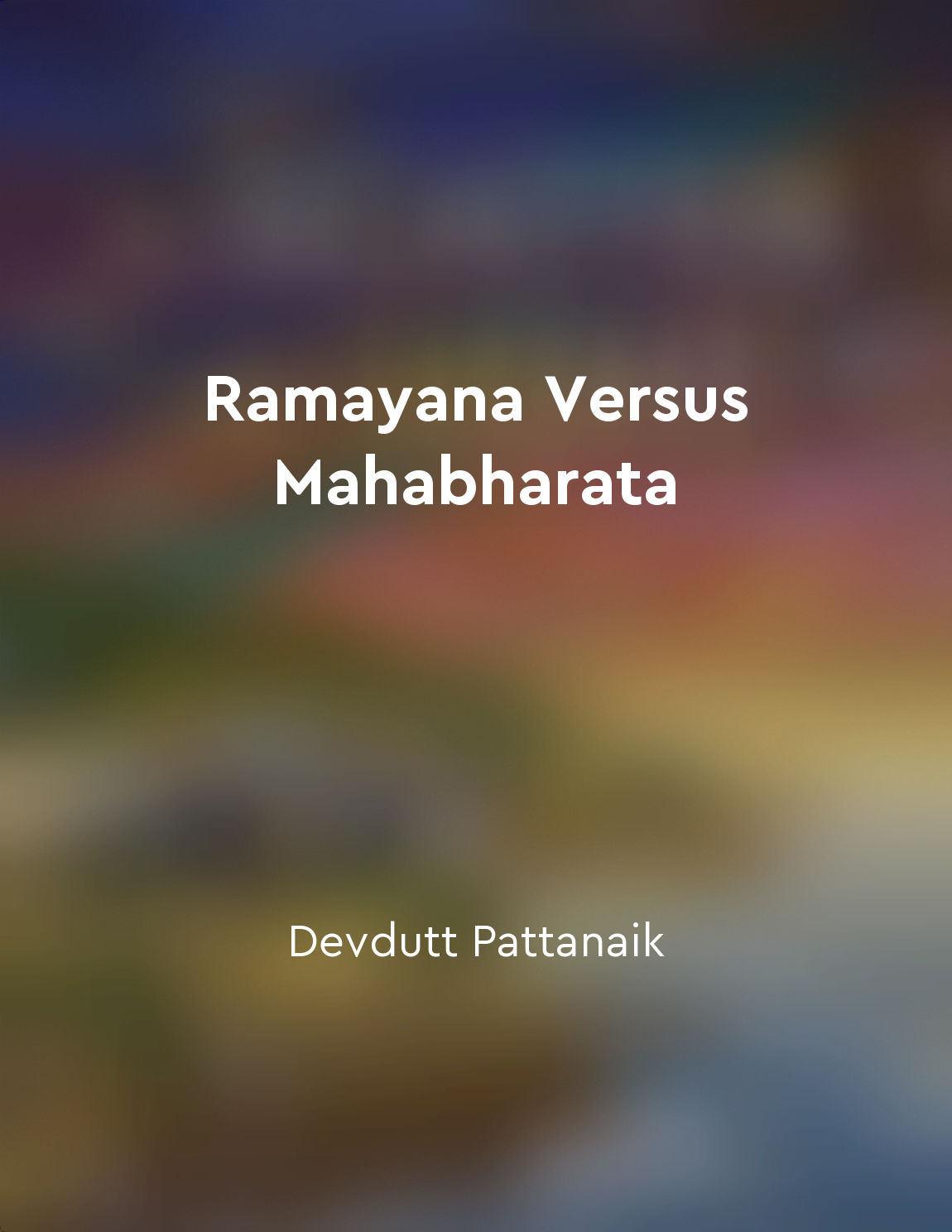Ramayana's Sundara Kanda is beauty, Mahabharata's Drona Parva is training from "summary" of Ramayana Versus Mahabharata by Devdutt Pattanaik
The Sundara Kanda of the Ramayana is like a beautiful painting, filled with vivid imagery and poetic descriptions. It is a chapter that focuses on the journey of Hanuman to Lanka in search of Sita. The lush descriptions of forests, mountains, and palaces create a sense of wonder and awe in the reader's mind. The emotional depth of the characters and the moral dilemmas they face add layers of complexity to the narrative. On the other hand, the Drona Parva of the Mahabharata is more like a rigorous training session. This section of the epic focuses on the war strategies and military tactics employed by the characters. It is a chapter that is filled with descriptions of battle formations, weapons, and combat techniques. The emphasis here is on the practical aspects of warfare and the importance of discipline, training, and strategy in achieving victory. In the Sundara Kanda, beauty is celebrated in all its forms - be it the beauty of nature, the beauty of love, or the beauty of sacrifice. It is a chapter that invites the reader to appreciate the world around them and find joy in the simple pleasures of life. The focus is on emotional resonance and spiritual growth, rather than on practical considerations or strategic planning. In contrast, the Drona Parva is all about discipline and training. It is a chapter that emphasizes the importance of preparation, hard work, and dedication in achieving one's goals. The characters in this section of the Mahabharata are constantly honing their skills, learning from their mistakes, and striving to become better warriors. The focus is on the relentless pursuit of excellence and the never-ending quest for self-improvement.- The Sundara Kanda and the Drona Parva represent two different approaches to storytelling - one focused on beauty and emotion, and the other focused on discipline and training. Both chapters have their own unique strengths and qualities, and both offer valuable lessons for the reader to ponder and reflect upon.
Similar Posts
Krishna as charioteer
In the great epic Mahabharat, we find a significant event where Lord Krishna takes on the role of a charioteer for Arjuna, one ...

Rama as an ideal king
Rama, the protagonist of the epic tale, is depicted as the epitome of an ideal king. His character is a blend of virtues such a...
The caste system has influenced social structures in India for centuries
The caste system, deeply embedded in the social fabric of India, has played a significant role in shaping the country's social ...

Ramayana's Sundara Kanda is beauty, Mahabharata's Drona Parva is training
The Sundara Kanda of the Ramayana is like a beautiful painting, filled with vivid imagery and poetic descriptions. It is a chap...

Ram's coronation as Ayodhya's king
The day had finally arrived when Ayodhya would witness the grand coronation of Ram as its king. The city was adorned with vibra...
Hanuman plays a crucial role in this battle
In the fierce battle that ensued, Hanuman emerged as a valiant warrior, displaying unmatched strength and courage on the battle...
The loyalty of Rama's allies
In the epic Ramayana, we witness the unwavering loyalty displayed by Rama's allies towards him. This loyalty is not merely a su...
Divine intervention
The Ramayan tells the story of the divine prince Rama, who is exiled from his kingdom and embarks on a journey with his loyal b...

